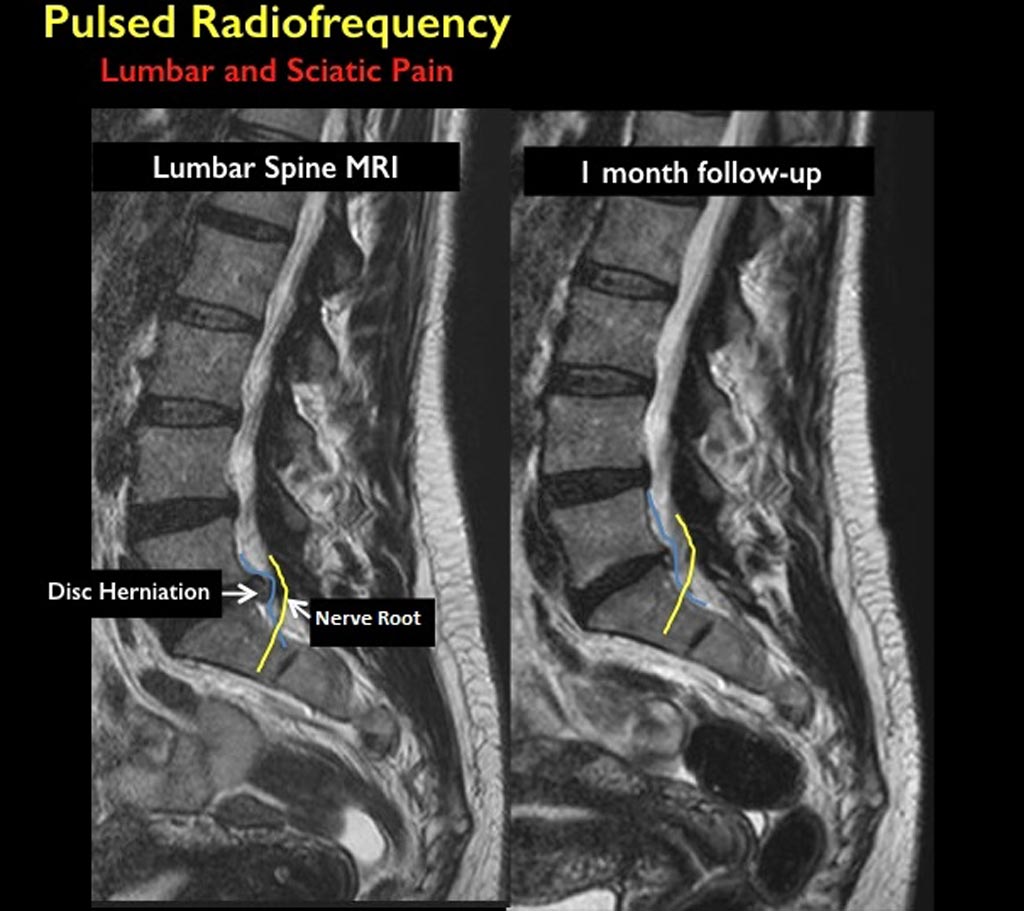Pulsed Radiofrequency Relieves Acute Back Pain and Sciatica
By HospiMedica International staff writers
Posted on 12 Dec 2018
Pulsed radiofrequency (pRF) is effective for patients with acute or subacute neuroradicular lower back pain unresponsive to usual care, according to a new study.Posted on 12 Dec 2018
Researchers at Sapienza University (Rome, Italy) conducted a randomized prospective trial involving 260 patients with acute or subacute neuroradicular low back pain, who were assigned to either pRF treatment performed using a needle-electrode equipped with a probe tip directed to the symptomatic dorsal root ganglion under computerized tomography (CT) guidance (128 patients), or to CT-guided steroid injection of the same anatomical target (120 patients). All patients received one to three sessions of therapy, applied for 10 minutes.

Image: Image of a herniated disc before treatment and at one-month follow-up (Photo courtesy of RSNA).
The results revealed that at one year follow-up, both groups reported a linear reduction in median visual analogue scale (VAS) pain and disability scores, but patients who underwent pRF obtained significantly greater overall improvements, as well as significant reduction in leg pain. The probability of perceived recovery was 95% and 61% in the pRF and injection-only groups, respectively. The study was presented at the annual meeting of the Radiological Society of North America (RSNA), held during November 2018 in Chicago (IL, USA).
“The results of the study are superior to those typically reported for usual care strategies and injections, and may help a substantial number of patients with sciatic disk compression whose symptoms do not benefit from conservative therapy,” said senior author and study presenter Professor Alessandro Napoli, MD, PhD. “Pulsed radiofrequency creates a nerve modulation, significantly reducing inflammation and its associated symptoms. When pulsed radiofrequency is followed by steroid injection, the result is longer lasting and more efficacious than injection only.”
Lumbar disk herniation is a common, often debilitating, condition that occurs when the disks nucleus pulposus bulges through a tear in the exterior layer, pressuring the nerve root ganglion. Herniated disks are often the source of sciatica, a pain that radiates down from the lower back into the leg. Conservative treatment options range from pain medications to corticosteroids injected directly into the affected area of the spine. Those who do not respond may require surgery.
Related Links:
Sapienza University














